Pad Thai Noodles: Easy Takeout-Style Recipe at Home
The average American orders Thai food takeout roughly once a month, but with the right technique, homemade Pad Thai noodles can actually taste better than restaurant versions. This iconic Thai street food has captured hearts worldwide with its perfect balance of sweet, sour, salty, and umami flavors. Our authentic recipe brings this beloved dish right to your kitchen, letting you customize heat levels and ingredients while saving money. This main dish recipe takes less than 30 minutes to prepare, making it faster than ordering delivery and infinitely more satisfying when you master the perfect balance of flavors that make Pad Thai noodles so irresistible.
Table of Contents
Ingredients List
For the Pad Thai sauce :
- 3 tablespoons fish sauce (nam pla) – vegetarian substitute: soy sauce or coconut aminos
- 3 tablespoons palm sugar or brown sugar
- 2 tablespoons tamarind paste
- 1 tablespoon rice vinegar
- 1 teaspoon sriracha or chili sauce (adjust to taste)
For the noodles:
- 8 ounces rice noodles
- 2 tablespoons vegetable oil
- 3 cloves garlic, minced
- 1 shallot, finely sliced
- 8 ounces protein of choice (chicken, shrimp, tofu, or a combination)
- 2 eggs, lightly beaten
- 1 cup bean sprouts, fresh and crisp
- 1/4 cup preserved radish (optional but adds authentic flavor)
- 3 green onions, cut into 1-inch pieces
- 1/3 cup roasted peanuts, roughly chopped
- 1/4 cup fresh cilantro leaves
- Lime wedges for serving
Timing
Preparation Time: 15 minutes – primarily soaking the rice noodles and organizing ingredients Cooking Time: 10 minutes Total Time: 25 minutes
Step-by-Step Instructions
Step 1: Prepare the Rice Noodles
Soak the rice noodles in room temperature water for 20-30 minutes until they’re pliable but still firm and slightly undercooked. Unlike Italian pasta, rice noodles used in Pad Thai don’t require boiling – they’ll finish cooking in the wok. Drain thoroughly and set aside. Properly soaked noodles are the foundation of exceptional Pad Thai noodles, preventing the dreaded mushy texture that plagues many homemade versions.
Step 2: Mix the Pad Thai Sauce
While the noodles soak, whisk together fish sauce, palm sugar, tamarind paste, rice vinegar, and sriracha in a small bowl until the sugar dissolves completely. This balanced sauce is what distinguishes authentic Pad Thai noodles from imposters – taste and adjust seasonings to achieve your perfect sweet-sour-salty ratio.
Step 3: Prepare Your Protein
Season your chosen protein lightly with salt and pepper. If using chicken or shrimp, slice into bite-sized pieces to ensure quick, even cooking. For tofu, press excess moisture out before cutting into cubes – this helps it brown properly and absorb the flavors of your Pad Thai noodles sauce. Having protein pieces of uniform size ensures they cook evenly alongside your noodles.
Step 4: Heat the Wok and Start Cooking
Heat a wok or large skillet over high heat until very hot. Add oil and swirl to coat the surface. Add garlic and shallots, stir-frying just until fragrant, about 30 seconds. The intense heat of a proper wok creates the “wok hei” – the smoky essence that elevates restaurant-quality Pad Thai noodles above home versions.
Step 5: Cook the Protein
Add your protein to the hot wok, spreading it in a single layer. Let it sear undisturbed for 30 seconds before stir-frying until nearly cooked through. Push the ingredients to one side of the wok, creating space for the next step. This technique of cooking in zones is what allows everything in your Pad Thai noodles to be perfectly cooked.
Step 6: Add the Eggs
Pour the beaten eggs into the empty side of the wok. Let them set slightly, then scramble until barely cooked but still moist. Fold the eggs into the protein mixture. The eggs should remain visible in small pieces throughout your Pad Thai noodles, not disappear into the sauce.
Step 7: Add the Noodles and Sauce
Add the drained rice noodles to the wok along with the prepared sauce. Toss everything together using two spatulas in a lifting motion to combine ingredients without breaking the noodles. Continue stir-frying until the noodles absorb the sauce and take on a slightly caramelized quality – this usually takes 2-3 minutes and is the defining characteristic of perfect noodles.
Step 8: Incorporate the Vegetables
Add bean sprouts, preserved radish (if using), and green onions. Stir-fry for just 30-60 seconds – the vegetables should retain their crunch, providing textural contrast to the soft noodles. Authentic Pad Thai noodles maintain the integrity of each ingredient rather than cooking everything to the same consistency.
Step 9: Finish with Garnishes
Remove your Pad Thai noodles from heat and transfer to serving plates. Top with chopped peanuts and fresh cilantro leaves. Serve immediately with lime wedges on the side for squeezing over the noodles just before eating. The final squeeze of lime brightens the entire dish and brings all the complex flavors of your noodles into perfect harmony.
Nutritional Information
Per serving of these noodles (recipe makes 4 servings):
- Calories: 410
- Protein: 18g – higher when made with shrimp or chicken
- Carbohydrates: 58g
- Fat: 12g
- Fiber: 3g
- Sodium: 850mg
- Sugar: 8g
- Iron: 15% of DV
- Calcium: 8% DV
- Vitamin C: 12% DV
Healthier Alternatives
Transform this classic Pad Thai noodles recipe into an even more nutritious dish with these thoughtful modifications:
- Substitute brown rice noodles for white rice noodles to increase fiber content and create a more filling version of Pad Thai noodles with a lower glycemic index
- Replace half the noodles with spiralized zucchini or carrots for a lighter, vegetable-forward take on traditional Pad Thai noodles
- Use coconut aminos instead of fish sauce to reduce sodium content while maintaining the umami flavor profile essential to authentic Pad Thai noodles
- Increase the protein-to-carbohydrate ratio by doubling the egg and protein while reducing noodles by one-third
- Boost vegetable content by adding red bell peppers, broccoli florets, or snap peas to increase vitamin content and create a more colorful plate of Pad Thai noodles
- Reduce oil by using a non-stick wok and cooking spray, cutting overall fat content without sacrificing the texture of your noodles
- Substitute natural monk fruit sweetener for palm sugar to lower the carbohydrate and calorie content for those watching their sugar intake
Serving Suggestions
Elevate your Pad Thai noodles meal with these complementary dishes and presentation ideas:
- Serve your noodles with a side of Tom Kha soup (coconut milk soup) for an authentic Thai dining experience
- Offer a refreshing cucumber salad with rice vinegar and a touch of sugar to cleanse the palate between bites of rich Pad Thai noodles
- Arrange your Pad Thai noodles on a platter family-style, with extra garnishes in small bowls for personalization
- Create a Thai-inspired beverage pairing with Thai iced tea or a lemongrass-infused sparkling water to complement your Pad Thai noodles
- For entertaining, serve small portions of Pad Thai noodles in individual ceramic spoons as an appetizer
- Wrap portions of cooled Pad Thai noodles in butter lettuce leaves for a fresh, handheld variation that’s perfect for casual gatherings
- Present your noodles with chopsticks and forks, allowing guests to choose their preferred eating utensil
- Garnish the serving platter with edible flowers like orchids for a visually stunning presentation that honors Thai culinary aesthetics
Common Mistakes to Avoid
- Overcooking the rice noodles: Soaking them until just pliable, not soft, prevents the mushy texture that ruins many homemade noodles. They’ll continue cooking in the wok.
- Using cold ingredients: Room-temperature ingredients maintain the high heat needed for authentic Pad Thai noodles. Cold items lower wok temperature, resulting in steamed rather than stir-fried noodles.
- Overcrowding the wok: Cooking Pad Thai noodles in batches if necessary ensures proper heat distribution. Too many noodles at once leads to uneven cooking and soggy results.
- Neglecting the sauce balance: The signature Pad Thai noodles flavor comes from the perfect balance of sweet, sour, salty, and umami. Taste and adjust your sauce before adding it to the wok.
- Stirring too aggressively: Gentle tossing preserves the integrity of both noodles and other ingredients. Over-stirring breaks the noodles and turns your Pad Thai into a mushy mess.
- Adding all vegetables at the beginning: Incorporate quick-cooking vegetables like bean sprouts at the end to maintain their crunch, creating the textural contrast that makes Pad Thai noodles so satisfying.
- Using pre-packaged Pad Thai sauce: The finest noodles come from making your own sauce. Pre-made sauces often contain excessive sugar and preservatives that mask the authentic flavors.
- Skipping the garnishes: Fresh cilantro, chopped peanuts, and lime wedges aren’t optional—they’re essential components that complete the experience.
Storing Tips
For preparation:
- Prepare all ingredients up to 24 hours ahead and store them separately in airtight containers in the refrigerator
- The Pad Thai sauce can be made up to 5 days in advance and stored in a sealed jar—the flavors actually improve with a day of melding
- Soak noodles just before cooking, not in advance, as pre-soaked noodles become sticky and may break during stir-frying
For leftovers:
- Store leftovers in an airtight container in the refrigerator for up to 3 days
- When reheating, add a splash of water or broth to refresh the noodles and prevent drying out
- Reheat in a wok or skillet rather than microwave for best texture preservation
- Add fresh garnishes after reheating to maintain their vibrant flavors and textures
- Freeze portions of Pad Thai noodles without garnishes for up to 1 month in freezer-safe containers
- Thaw frozen noodles in the refrigerator overnight before reheating with a tablespoon of oil in a hot wok
Conclusion
This authentic recipe transforms a beloved takeout classic into an accessible home-cooked masterpiece in just 25 minutes. With its perfect balance of sweet, sour, salty, and umami flavors, this versatile main dish adapts to various dietary needs while delivering restaurant-quality results. The combination of rice noodles, protein, and fresh vegetables creates a satisfying meal that’s both economical and impressive. Try this Pad Thai noodles recipe today and share your experience in the review section or leave a comment on our blog. Don’t forget to subscribe for more international recipe inspirations!
FAQs
What’s the best protein to use in Pad Thai noodles?
Traditional Pad Thai noodles feature shrimp, chicken, tofu, or a combination. Each protein brings different qualities—shrimp adds sweetness, chicken provides tenderness, and tofu absorbs the sauce beautifully. Choose based on your preference or what’s available.
What kind of noodles are used in authentic Pad Thai?
Genuine Pad Thai noodles use rice stick noodles (sen lek), which are flat and medium-width. These can be found in Asian markets or international grocery aisles. Avoid substituting with vermicelli (too thin) or wider rice noodles (too thick) for the most authentic texture and sauce absorption.
Your Feedback Matters
There are no reviews yet. Be the first one to write one.

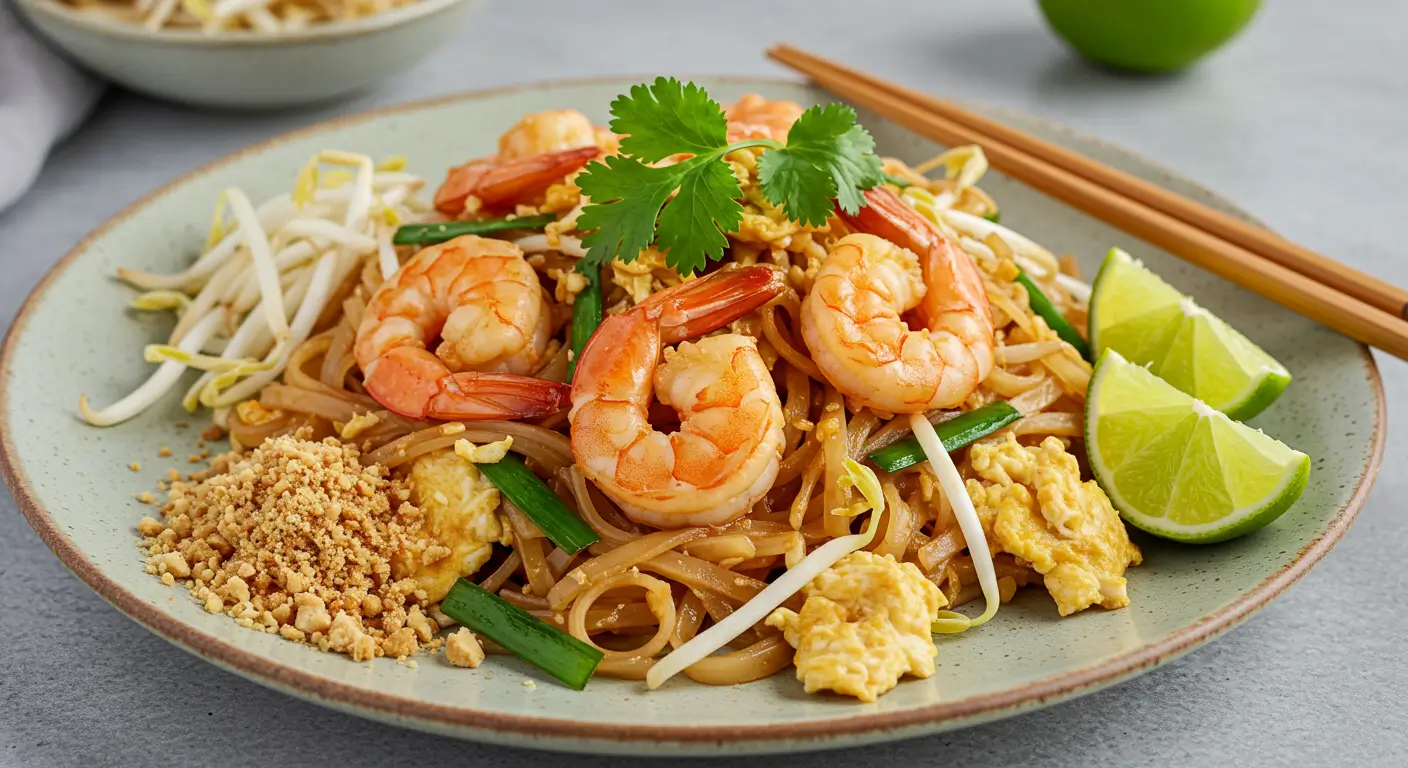
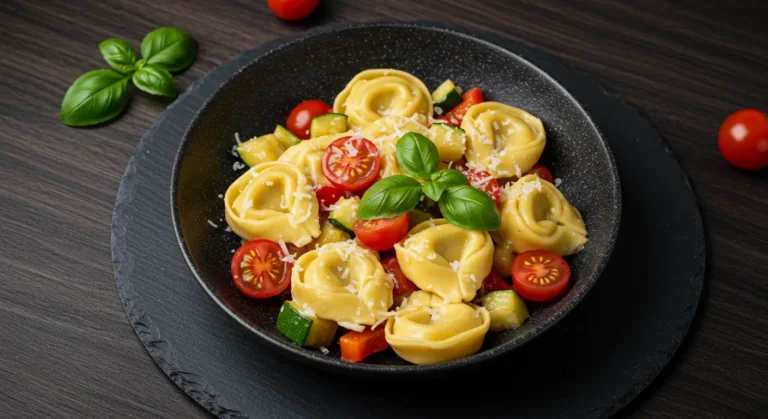
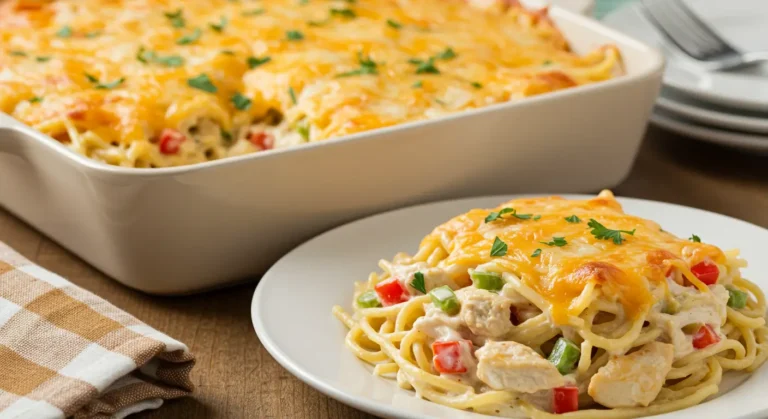
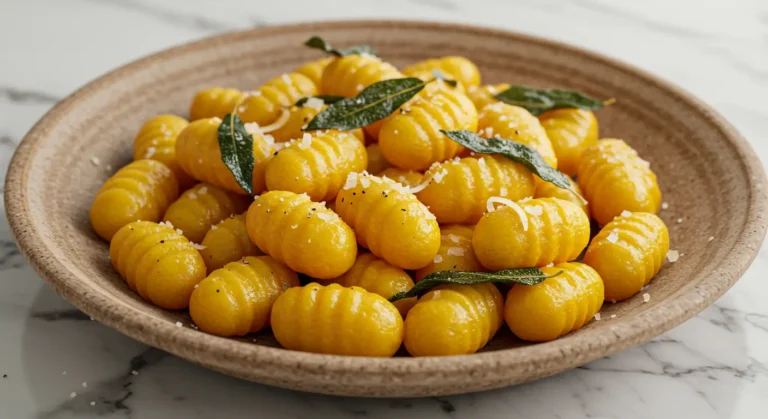
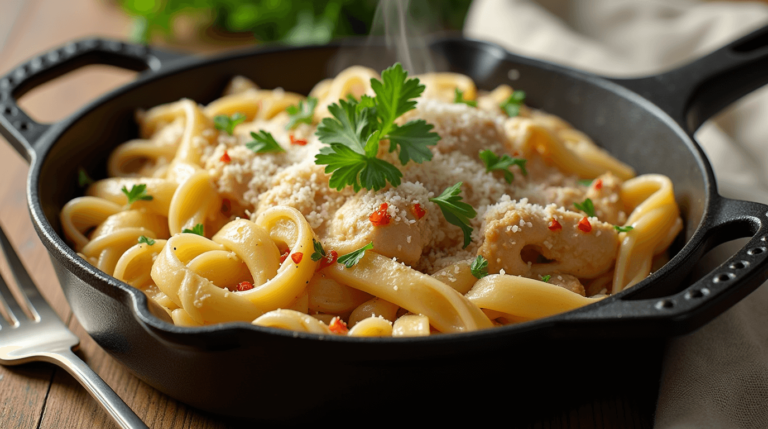
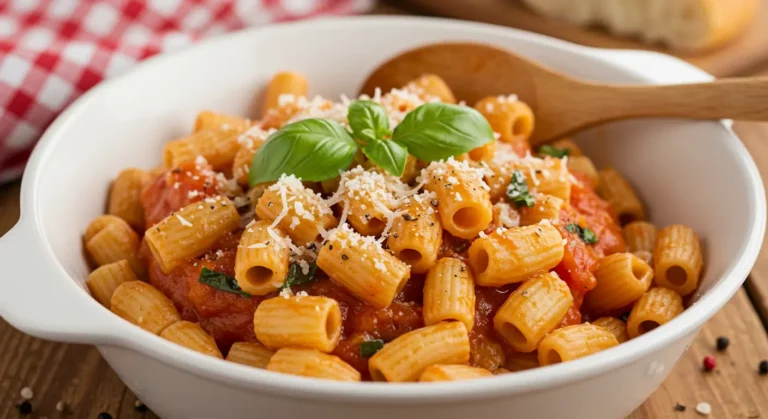
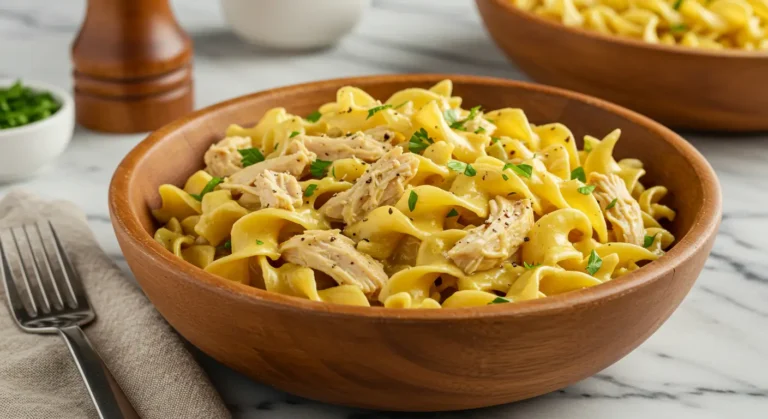
One Comment
Comments are closed.